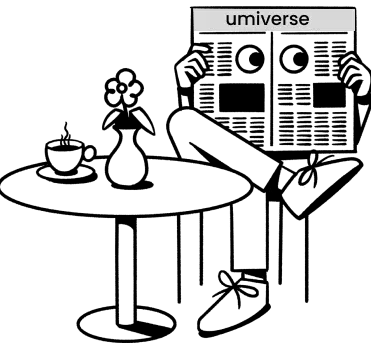LEARN
Languages shape the way we think
Language is a thread that ties us all together, yet it also uniquely distinguishes us.

As humans, we are ensnared in a paradoxical dance with language. We shape it, and it shapes us. Every language, like a brush dipped in different hues of culture and history, paints a distinctive landscape of thought. In the grand tapestry of human existence, language is the thread that ties us all together, yet it also uniquely individuates us.
Consider the fascinating case of ‘linguistic relativity,’ an idea that suggests the structure of a language influences the ways its speakers are able to think. For instance, picture a speaker of the Aymara language from South America, a language devoid of future tense. A lack of future tense in their language leads to a blurred line between the present and the future, influencing their decisions and actions in a manner that is almost alien to the English-speaking mind. A speaker of the Inuit language, which has an array of words for snow, views the world with a palette rich in icy whites. Our linguistic environment molds our perception, amplifying certain aspects of our world while muting others, sketching a cognitive portrait that is as diverse as the languages we speak.

Unlocking New Worlds: The Adventure of Learning a New Language
To lose a language is to lose a piece of our collective human heritage, and to gain a new one is to add another rich color to the spectrum of human thought. In the realm of language, where each tongue is a distinct world, the ability to speak two languages is akin to having dual citizenship in the universe of human thought. Bilinguals can effortlessly traverse between two worlds, two modes of perception, and two cultural narratives, enriching their understanding of themselves and the world at large.
Knowing more than one language expands our cognitive, cultural, and personal horizons. It gives us the ability to live, think, and feel in two different linguistic worlds, doubling our wealth of experiences and enhancing our understanding of the boundless diversity of human thought. It is indeed a precious gift, a magical key that unlocks not one but multiple portals to the mesmerizing universe of human expression.

The Union of Language and Technology
As we continue our exploration of language, we cannot ignore the impact of technology on how we learn languages. Imagine strapping on a VR headset and transporting yourself to a cozy English cafe nestled in the heart of London. The hum of conversation surrounds you, and you hear the native speakers’ accents, the rhythm of their speech, and the colloquialisms. Instead of passively learning a language from textbooks, VR immerses the learner in realistic scenarios where they can interact with native speakers and engage with the language in a fully immersive, 360-degree environment.

VR English Language Learning Series
This is the power of VR in language learning: it makes a language come alive, steeping you in its cultural context and transforming every lesson into an exciting journey through the streets, dialogues, and life of a distant land, right from the comfort of your living room. VR English Language Learning (ELL) series marries the power of immersive technology with effective language instruction. It offers immediate access to a plethora of scenes and settings, bringing real-world language application into the learning space. Let’s explore the advantages of virtual reality in language learning:
- Judgement-Free Learning: VR provides a personal, immersive environment, enabling students to learn and make mistakes without fear of judgment.
- Diverse Settings: Learners get access to a variety of scenes, simulating real-world language usage in different contexts.
- Voice Recognition: The system utilizes advanced voice recognition for vocalization and speech practice, allowing learners to perfect their pronunciation in real-time.
- Instant Feedback: VR technology provides immediate, personalized feedback on pronunciation and speech, promoting rapid improvement and language clarity.
- Confidence Building: Through repeated practice in virtual scenarios, learners can build their confidence in language skills.
- Comprehensive Levels: The series offers four levels, from foundational to advanced, catering to a broad range of learners.
- Holistic Language Learning: VR language learning module is a holistic solution, integrating reading, writing, listening, and, crucially, speaking practice - an element often neglected in conventional language learning methods.
Each language, from the simplest to the most complex, is a key that unlocks a distinct portal to the human experience. Through learning multiple languages, we gain entry to numerous worlds, enhance our confidence, and enrich our understanding of the cultural and cognitive diversity of humanity. The harmonious convergence of language learning and technology signifies more than just educational advancement. It's a celebration of our shared human heritage, a testament to our collective curiosity, and a beacon guiding us towards a future where the diversity of human thought and expression is not just recognized but cherished. The future of language learning is here, and it's a journey as exciting and diverse as humanity itself.

Get stories selected just for you, right in your inbox.

Get stories selected just for you, right in your inbox.
This might interest you











